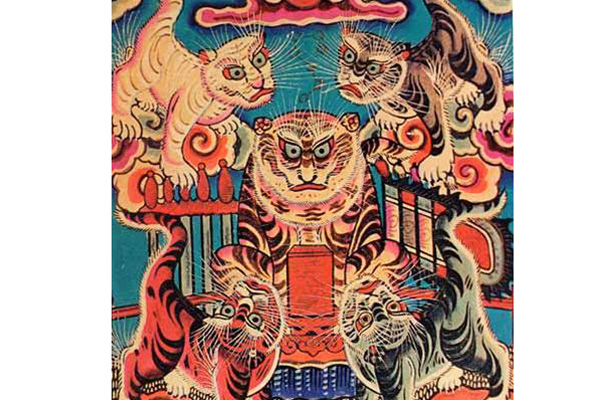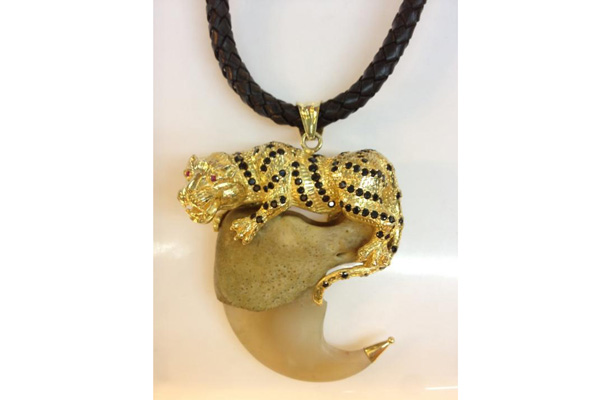Also called hùm, cọp, kễnh, khái, or ông Ba Mươi (Lord Thirty). Tigers live about 30 years and can reach a size of 2 meters in length, 1 meter in height, and as much as 200 kilograms in weight. They live in deep, thick forests and in brushy grasslands with abundant prey, shade and water.

They live on mammals (deer, wild boars, civet cats, wild buffalo and ox, turtles, rats, and frogs). The rutting season is in spring and summer. Each litter comprises 4-5 cubs, but the tigress rarely succeeds in raising all of them; the cubs are often eaten by other wild animals. Tiger fur was popular in the past as a decoration and for making coats. Tiger bones are used to prepare a jelled extract (cao hổ cốt) highly valued as a traditional medicine. The teeth make expensive souvenirs.

In the past, tiger hunting was conducted with rifles, poisoned arrows, spears, or traps. Traps were baited, then surrounded by straw covered with sticky resin. Once caught in the straw, the tiger would struggle and roll itself further, becoming more and more entangled in the ball of straw around its body. When the hunters arrived, they would push this living ball into a cage. Common sayings: Khỏe như hổ (as healthy [strong] as a tiger). Dữ như cọp (ferocious like a tiger). Hang hùm, nọc rắn (cave of a tiger, venom of a snake): a dangerous place.



